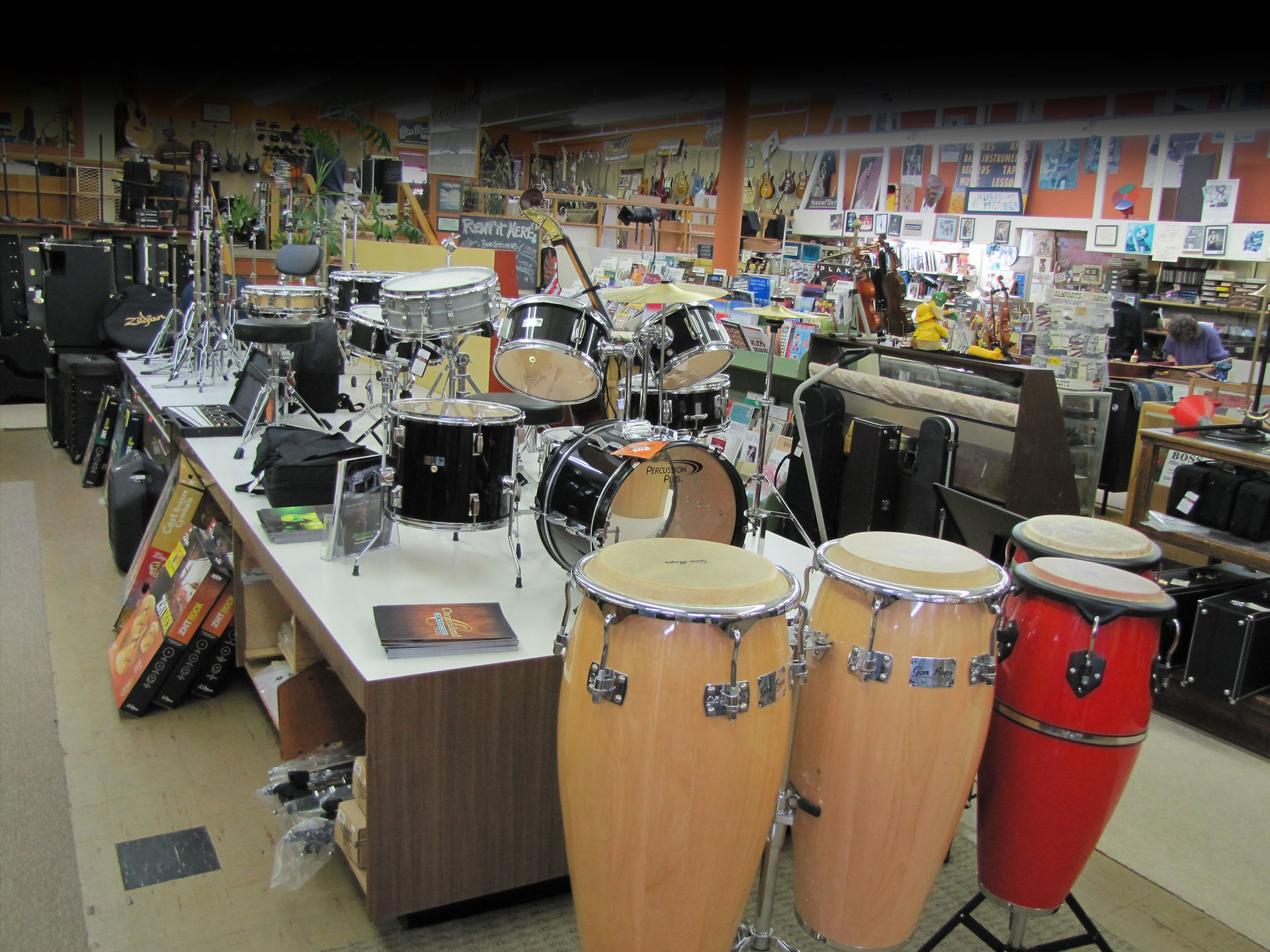
Tues. - Fri. 11 - 6pm
Sat. 10 - 5pm
Sunday & Monday Closed
309 West Main Street
Richmond, KY 40475

System


For well over a century and a half, The Martin Guitar Company has been continuously producing acoustic instruments that are acknowledged to be the finest in the world.
The Martin Guitar Company has, through the years, managed to survive with each succeeding generation from C. F. Martin, Sr.’s Stauffer influenced creations of the 1830s to recent developments introduced by C. F. Martin IV. Continuous operation under family management is a feat bordering on the remarkable, reflecting six generations of dedication to the guitarmaker’s craft. In or out of the music industry, C. F. Martin has few rivals for sheer staying power.
Throughout its colorful history, the company has adapted successfully to continual changes in product design, distribution systems, and manufacturing methods. In spite of the many changes, C. F. Martin has never veered away from its initial commitment to quality. The concern for producing the finest instruments possible in 1833 is especially evident today at Martin’s expanded facility in Nazareth, Pennsylvania.
The story behind one of America’s most famous guitars began on January 31, 1796, in Markneukirchen, Germany, with the birth of Christian Frederick Martin, Sr. Born into a long line of cabinet makers, Christian Frederick took up the family craft at the early age of 15, when he left his hometown and traveled to Vienna to apprentice with Johann Stauffer, a renowned guitar maker.
The early Martin guitars were totally hand-crafted products, made on a one-by-one basis, and there was little standardization. However, there were a few features that commonly incorporated in most of C. F. Martin’s instruments. Until the mid-1840s, Martin guitars were characterized by a headstock that had all the tuning keys on one side. Martin acquired this design from his teacher in Vienna, Johann Stauffer. The headstock design with all the tuning keys on one side was discontinued by Martin and went unused until Leo Fender resurrected the design in 1948 with his Telecaster guitar.
Another feature of the early Martin guitars was an adjustable neck. A screw mounted in the back of the heel of the neck was extended into the neck block. At the top of the dovetail (where the neck joins the body) there was a wooden fulcrum about which the neck could pivot up and down. With the strings attached, the neck could be adjusted via a clock key inserted into the heel. While the adjustable neck allowed the player to adjust the playing actions of the guitar, the device was complicated and prone to slipping under full string tension. So gradually, Martin phased out this unique neck adjustment.
The 1850s also witnessed one of C. F. Martin’s major design innovations, the "X" bracing system for the guitar top. Still in use today on all steel-string Martin guitars, the bracing system is largely responsible for the distinctive Martin tone, characterized by brilliant treble and powerful bass response.
C. F. Martin, Sr., died on February 16, 1873, leaving to his family and the musical world a fine tradition of guitar making. Succeeding him at the helm of the young company was his son, 48-year-old Christian Frederick, Jr., who was born in Germany. Since relocating from New York City to Nazareth, the Martin Guitar Company had evolved from a one-man operation into a thriving entity employing over a dozen craftsmen. Originally located in the Martin family homestead, Martin guitar operations had expanded to the point where a factory was needed. In 1859, a plant was constructed on the corner of Main and North Streets in Nazareth. Having undergone numerous expansions, the North Street plant is still used today as a warehouse and shipping location for strings and accessories, as well as the site of Guitarmaker’s Connection, a retail supply house for instrument making and repair.
Martin’s steadfast adherence to high standards of musical excellence, mixed with experienced management, has largely accounted for the company’s remarkable longevity. Marketing methods and product mix have changed at Martin over the years, but the company attitude towards guitar building has never varied. In the preface to the 1904 catalog, Frank Henry Martin explained to potential customers, "How to build a guitar to give this tone is not a secret. It takes care and patience. Care in selecting the materials, laying out the proportions, and attending to the details which add to the player’s comfort. Patience in giving the necessary time to finish every part. A good guitar cannot be built for the price of a poor one, but who regrets the extra cost for a good guitar?" Almost eighty years have passed since Frank Henry Martin authored this statement of policy, but it still is an accurate expression of Martin’s ongoing commitment to quality.


